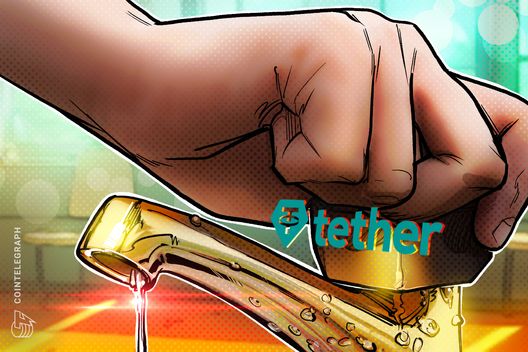

The recent freezing of $12.3 million in Tether (USDT) on the Tron network has reignited the debate surrounding stablecoins, central bank digital currencies (CBDCs), and the fundamental principles of decentralization. This action by Tether, the issuer of the world's largest stablecoin, underscores the inherent tensions between regulatory compliance, centralized control, and the promise of a decentralized financial system.
Tether's freeze, executed on June 16, 2025, was triggered by suspicions of illicit activity and potential anti-money laundering (AML) violations. On-chain data from Tronscan confirmed the asset freeze, aligning with Tether's policy of adhering to the U.S. Office of Foreign Assets Control (OFAC) Specially Designated Nationals (SDN) List. Paolo Ardoino, Tether's CEO, emphasized the company's commitment to combating financial crime and its ability to track transactions and freeze USDT linked to illicit activities. This capability, he noted, distinguishes Tether from both traditional fiat currencies and decentralized assets.
However, this action has also intensified the discussion about the true nature of stablecoins and whether they can genuinely deliver on the promise of decentralization. Critics argue that the centralized control exhibited by Tether, with its ability to freeze assets, mirrors the characteristics of CBDCs, which are digital forms of a country's fiat currency issued and controlled by the government. This raises concerns about potential surveillance, censorship, and the erosion of privacy within the cryptocurrency ecosystem.
The contrasting visions of CBDCs and stablecoins highlight a fundamental philosophical divide. CBDCs represent an extension of state authority, designed to modernize payments and provide governments with direct tools for policy execution. In contrast, stablecoins emerged from the crypto movement, embodying the principles of accessibility, interoperability, and financial autonomy. While both CBDCs and stablecoins may be tied to fiat currencies, their underlying principles and control mechanisms differ significantly.
The recent passage of the GENIUS stablecoin bill in the United States has further fueled this debate. Critics argue that the bill's stringent regulatory framework, including enhanced AML protocols and KYC mandates, effectively embeds surveillance capabilities within stablecoin operations, aligning them with the characteristics of CBDCs. This has prompted concerns about the potential for regulatory capture, fiat reserve seizures, and operational vulnerabilities in centralized stablecoins.
Tether has faced scrutiny over its reserves and transparency. In 2021, the U.S. Commodity Futures Trading Commission (CFTC) fined Tether $41 million for falsely claiming that every USDT was backed 1:1 by cash reserves. Audits revealed that Tether's reserves included riskier assets like commercial paper. These issues have led to a loss of trust and prompted users to seek more transparent alternatives like USDC and DAI.
Despite these challenges, stablecoins have become a significant part of the digital economy. They offer benefits such as fast and secure transactions, reduced volatility compared to other cryptocurrencies, and the potential for use in cross-border payments and decentralized finance (DeFi). CBDCs, on the other hand, could streamline cross-border payments, promote financial inclusion, and provide a secure, government-backed digital currency option.
The future of digital currency likely involves a coexistence of CBDCs and stablecoins, each catering to different needs and preferences. CBDCs may be favored for large-value transactions and government payments, while stablecoins could thrive in micropayments, cross-border remittances, and innovative financial applications. However, the ongoing debate about decentralization, regulatory compliance, and the role of government oversight will continue to shape the evolution of both stablecoins and CBDCs. The actions of entities like Tether, and the regulatory responses they provoke, serve as crucial case studies in this rapidly evolving landscape.